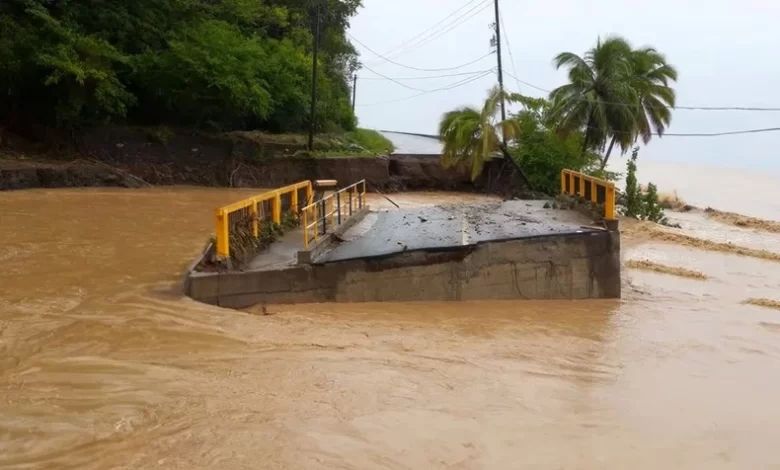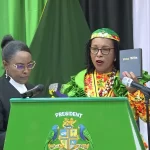Tropical Storm Erika, Dominica

Tropical Storm Erika was a significant weather event that impacted Dominica and other parts of the Caribbean during August 2015, amid Dominica’s hurricane season. The storm caused extensive damage due to its intense rainfall and strong winds, highlighting the region’s vulnerability to tropical storms. Erika is remembered as one of the deadliest and most destructive storms in Dominica’s recent history.
Tropical Storm Erika: Formation and Impact
Tropical Storm Erika developed in the Atlantic Ocean and quickly moved towards the Caribbean, gaining strength as it approached. Upon landfall in Dominica on August 27, 2015, the storm unleashed torrential rains exceeding 15 inches (380 mm) within a short period. This deluge triggered widespread flooding and landslides across the island’s east coast and west coast.
The natural landscape, including the Morne Trois Pitons National Park and areas around the Dominica Botanic Gardens, suffered severe damage, affecting ecosystems and local communities. Critical infrastructure, such as roads, bridges, and homes, was destroyed or severely damaged. Dominica’s landmarks and freshwater features also damaged the tourism industry.
Entire communities were devastated, with villages like Petite Savanne experiencing massive landslides that led to the loss of lives and properties. The village was declared unsafe, and residents were evacuated permanently. Other areas, such as Dubuque, Coulibistrie, and Colihaut, were heavily impacted by flooding and mudslides, leading to the displacement of residents and extensive infrastructural damage.
Economic and Environmental Effects
The economic impact of Tropical Storm Erika was profound, with agriculture, tourism, and housing sectors suffering the most significant losses. The estimated damages exceeded EC$1.3 billion (approximately USD $482.8 million). The agriculture sector faced significant setbacks as crops and livestock were destroyed, affecting food security and farmers’ livelihoods. Rehabilitation of the Boiling Lake area and other tourist attractions was prioritized to restore the economic stability provided by tourism.
Environmental consequences included deforestation due to landslides and the alteration of river courses. Post-Erika environmental recovery efforts focused on reforestation projects and river clean-ups, which are crucial for preserving Dominica’s renowned natural beauty and preventing future erosion. Initiatives led by the Forestry, Wildlife and Parks Division were integral in these efforts, aiming to restore ecological balance and protect biodiversity.
Response and Recovery
The response to Tropical Storm Erika involved significant local and international support. Emergency services, including the Dominica Red Cross Society and the Dominica Coast Guard, played critical roles in rescue operations and immediate relief efforts. The Dominica Meteorological Office enhanced weather forecasting systems to predict such events in the future better.
Recovery was a lengthy process focusing on rebuilding infrastructure such as roads, bridges, and homes that were destroyed or severely damaged. With assistance from international donors and organizations, the government initiated programs to rehabilitate damaged areas and support displaced communities. There was a collaborative approach involving various stakeholders from government bodies, including the Ministry of Health, Wellness and Social Services, and community organizations—this collective effort aimed to build a more resilient Dominica capable of withstanding future tropical storms and hurricanes.
Legacy and Lessons Learned
Tropical Storm Erika stressed the need for improved disaster preparedness and infrastructure resilience in Dominica. The event led to revising national climate resilience and emergency management policies. The establishment of more robust weather forecasting systems and community training programs were some of the critical measures implemented post-storm.
While Tropical Storm Erika was challenging for Dominica, it fostered a more substantial commitment to disaster resilience and environmental stewardship. Efforts have since been directed toward protecting the island and its people from future climatic threats, emphasizing the importance of sustainable development and climate change adaptation strategies.




